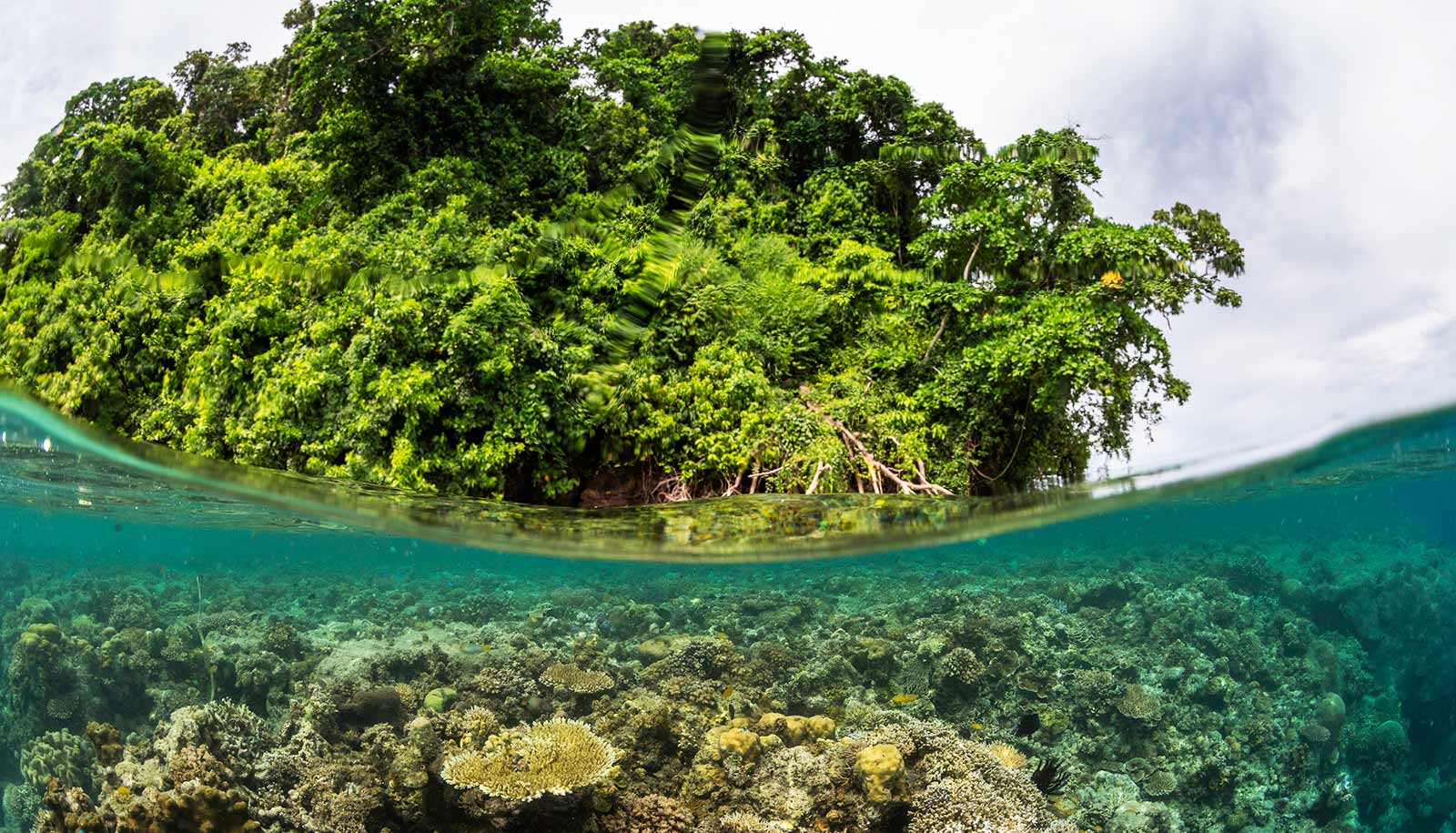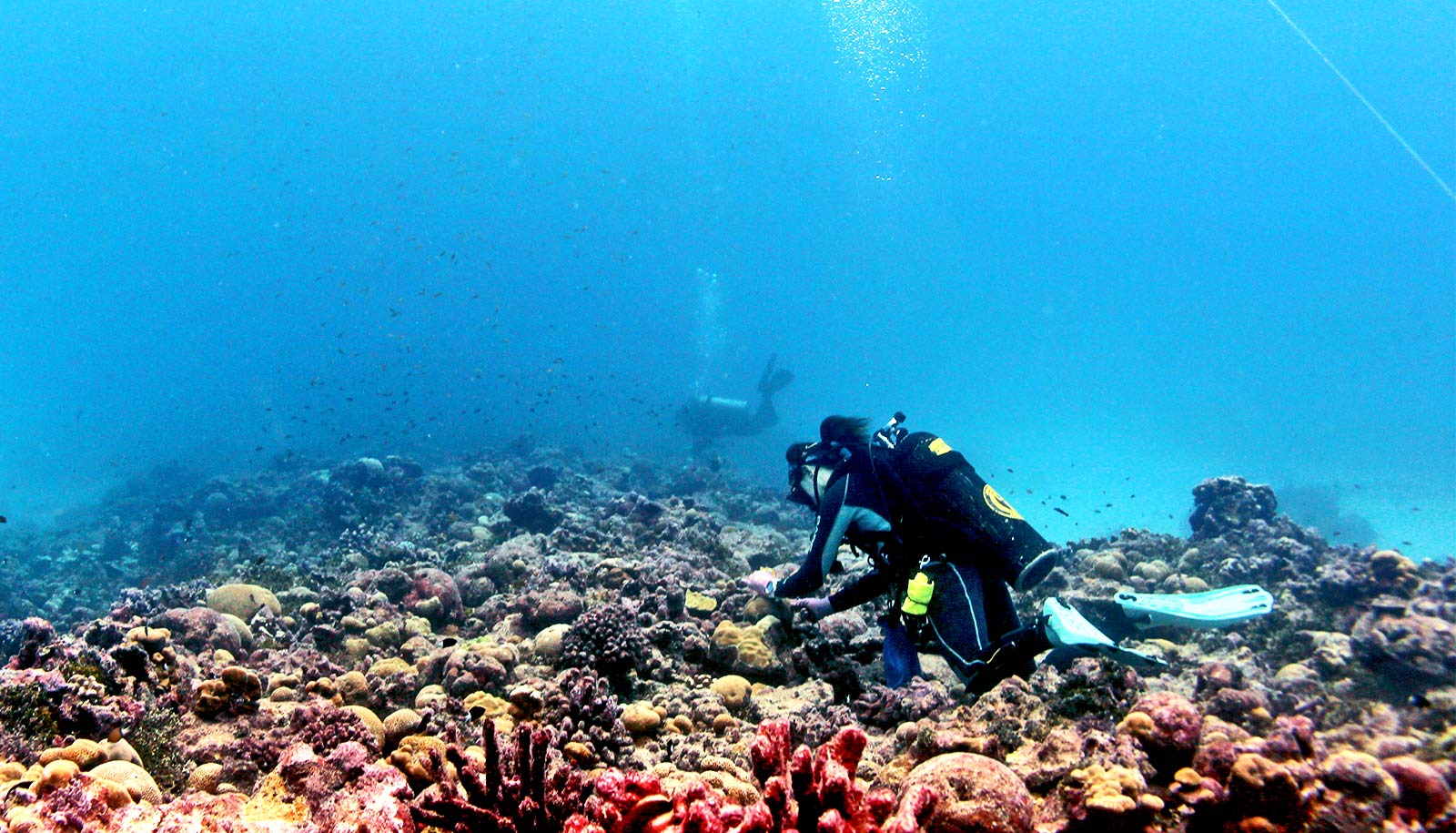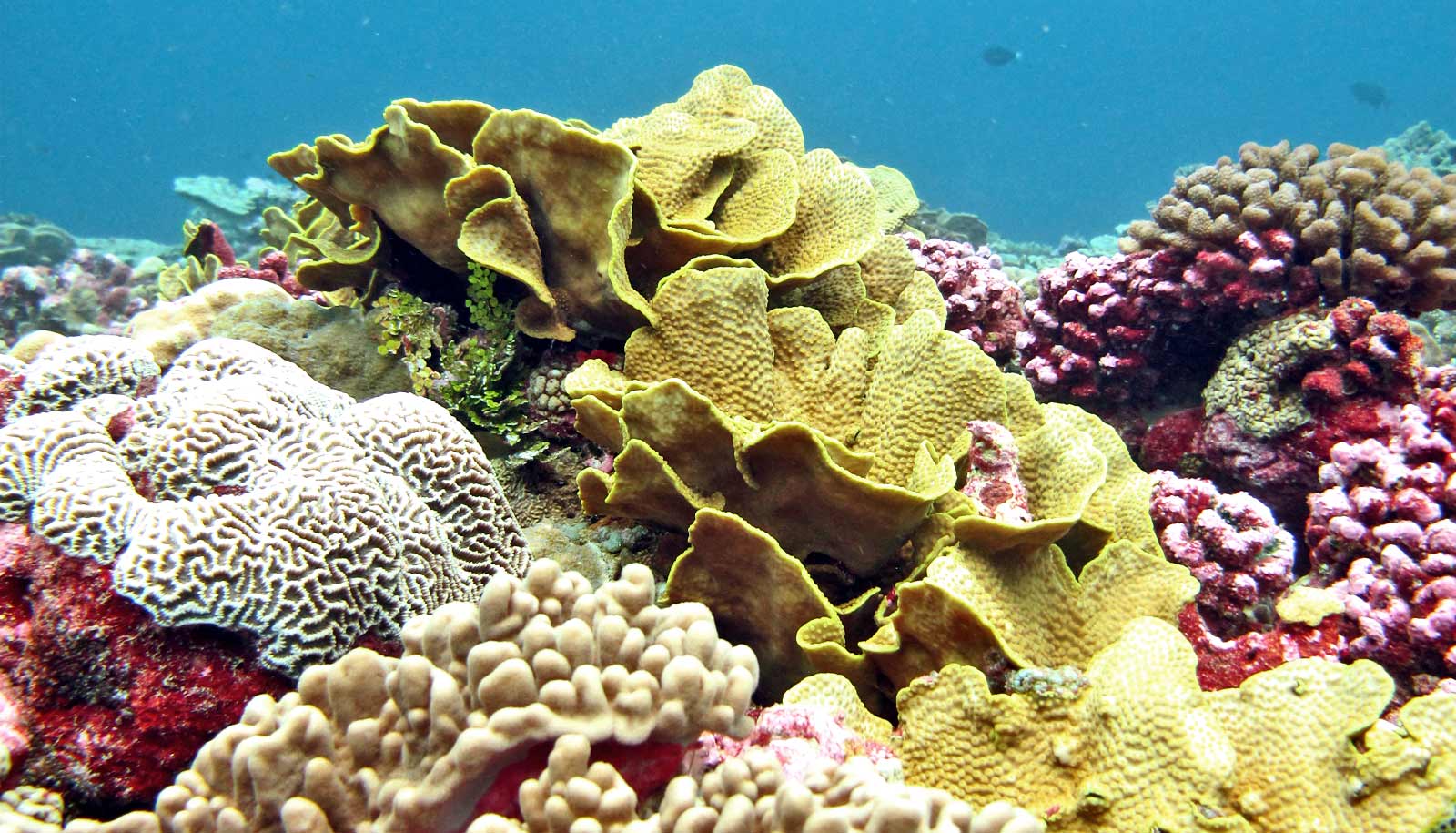More species of corals live in mangrove forests than in nearby shallow reefs, finds a new analysis of how environmental factors influence the growth and health of corals.
Researchers say this is a testament to coral adaptability, and the importance of ecological partnerships—such as between corals and mangroves—for the resilience of these ecosystems in the wake of human-made environmental turmoil.
Tropical coral reefs are the most biodiverse underwater ecosystem, providing a home to more than a quarter of all marine species. No strangers to environmental stressors and the on-going impacts of climate change, the survival of corals has increasingly been under threat in recent years.
For the new study, published in Ecosphere, researchers examined corals living under the canopies of mangroves and among their roots and hypothesized that mangroves may serve as a refuge from environmental stressors such as high solar intensity and warmer temperatures, both of which are present on adjacent shallow reefs.
Coral reefs under mangrove canopies
On a snorkeling excursion in Bocas del Toro, Panama, lead author Heather Stewart, a PhD student in the biology department at McGill University, noticed an unusual number of coral species living in the shade of a mangrove forest in less than a meter of water.
“While studying the plants and animals living underwater on the roots of mangrove islands in Panama, I found these gardens composed of coral colonies from multiple species growing in the shade of the mangrove forest canopy. This seemed unusual so I investigated further.
“The corals in the mangrove showed no signs of bleaching or disease, and the size of the coral colonies indicated that they had been there for a while. This observation led me to investigate the relationship between the mangroves and corals,” Stewart says.
“When you swim into the mangrove forest, it is like a light switch is flipped off and suddenly you are surrounded by darkness. Once your eyes adjust, you realize how enchanting and vibrant the root community is.
“I wanted to tease out whether the differences in coral species, health, and survival between the mangrove and shallow reef habitats were because of light and temperature. That is why I designed this experiment to manipulate light both on the reef and in the forest canopy,” says Stewart, whose work is co-supervised by coauthors Lauren Chapman, professor in the biology department at McGill, and Andrew Altieri of the University of Florida.
Light stress on shallow reefs
The researchers conducted an experiment in which they pulled back the canopy in mangroves and allowed in light as on the reef, and added shades to the reef to mimic the mangrove canopy. They found that light intensity was a key environmental parameter mediating coral bleaching, a sign of stress, and survival.
Their results reveal that mangrove habitats provide a refuge from the light stress present on nearby shallow reefs. Moreover, they discovered that corals from the reef bleached less than those originating from the mangrove corals following transplantation into the others habitat, suggesting that those corals that persist on reefs have had to develop increased tolerances to their more stressful setting.
“Our study revealed a lower number of coral species on the shallow reef than in adjacent mangroves. We suggest that the shallow reef environment selects for a subset of coral species able to tolerate the extreme conditions that characterize this habitat,” Chapman says.
If mangroves can be protected from human destruction, they may serve as refugia for corals under climate change and offer a strategy for coral reef persistence.
Based on their findings, the researchers hope to highlight key interactions between mangroves and corals, and thereby contribute to their conservation.
“When I began my PhD studying this mangrove-coral system, there was extremely limited information about the relationship between these coexisting mangroves and corals. These results are important because they suggest another mechanism by which we may be able to help prevent some corals from going extinct,” Stewart says.
Next steps should include scientists working with local communities and government as marine protected areas are expanded to meet the International Union for Conservation of Nature goal of protecting 30% of the world’s oceans by 2030.
The STRI, the NSERC CREATE in Biodiversity, Ecosystem Services, and Sustainability (BESS), the biology department at McGill University, the Steven Berkeley Marine Conservation Fellowship, and the Bridging the Americas Marine Conservation Fellowship, funded the work.
Source: McGill University


